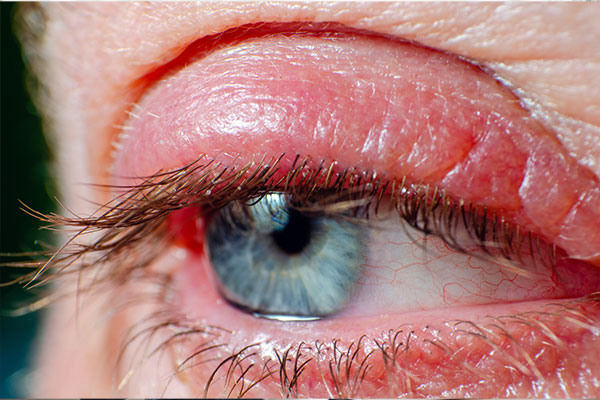Blepharitis is a common eye problem involving the inflammation of the eyelids. The condition can affect people of all ages, and while often uncomfortable, it is not contagious. Blepharitis may be categorized into two distinct types. Anterior blepharitis affects the outside edge of the eyelid where the eyelashes take root, and Posterior blepharitis occurs at the inner edge of the eyelid where it touches the surface of the eyeball.
There are several possible causes of blepharitis, including bacterial or fungal eyelid infections, seborrheic dermatitis (dandruff), dry eyes, Rosacea, eye allergies, eyelash mites, lice, as well as dysfunction of the oil glands in eyelids. Symptoms of the condition may include a burning or stinging sensation of the eyes, red or swollen eyelids, a crusty debris along the eyelashes, itchiness, irritated or watery eyes, sensitivity to light, blurred vision or a sensation of grittiness around the eyes.
As with all conditions that affect your eye health and vision, it is important to consult with an eye doctor. Without proper care, blepharitis can lead to other problems such as a stye, chalazion, pink eye, or even a corneal injury. One of the keys to blepharitis treatment is to keep the eyelids clean and free of crust. The eye doctor will advise you on the proper methods of self-care. When indicated, medications may also be prescribed to control inflammation or treat any infections as well as address any underlying conditions.
Blepharitis is often a recurring condition, which means that an effective approach to care involves consistent maintenance of the eyelid area. Based on the findings of your eye exam, Dr. Girgis will be able to advise you on the best course of action for addressing your blepharitis, allowing you to live comfortably with the condition and minimize its impact on your daily life.
What Is BlephEx™?

BlephEx™ is a revolutionary patented hand piece used to carefully spin a medical grade micro-sponge along the edge of your eyelids and lashes, removing scurf and debris found in moderate to severe blepharitis.It is a simple noninvasive in-office procedure that can help exfoliate your eyelids and provide patients relief from blepharitis, styes, and dry eyes. BlephEx™ can remove accumulated biofilm on the eyelids, eliminating the source of inflammation which leads to healthier, more comfortable eyelids and an increase in natural tear production. Talk to your doctor today if Blephex™ can improve your blepharitis.

